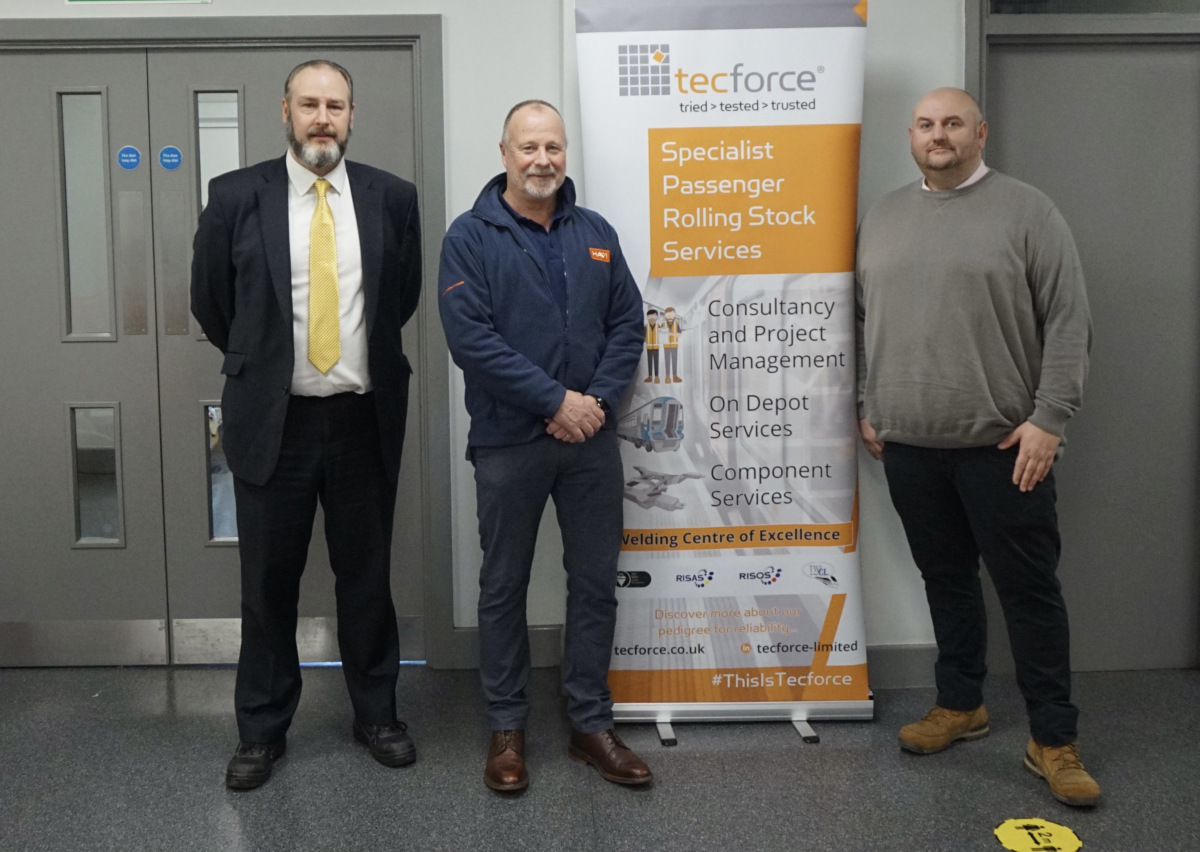April 2023 |Results from a recent test carried out by three businesses to explore whether consumables used in sheet metal grinding can reduce the harmful effects of exposure to vibration within the rail industry have shown that safe1 usage time, and productivity can be improved dramatically by selecting the right consumables.
TecForce, a specialist in weld engineering services and repair for the rail industry, used HAVi Technologies, an innovative, outcome driven provider of solutions that help organisations make better HAVs decisions, to advise and manage on matters relating to vibration exposure within the business. After being approached by PFERD, a leading provider of innovative, high performance, and progressive solutions; including low vibration products, for the Industrial Sectors, HAVi coordinated a series of tests to determine whether PFERD’s solutions would benefit TecForce.
Background
In order to reduce exposure to vibration in the workplace, we need to focus on the amount of vibration emitted by the tool in use whilst at the same time minimising the time to complete the task. The HSE, in their guidelines L140, refer to these variables as the Vibration Magnitude and the Trigger Time. Indeed, they go further and direct us to reduce risk to As Low As Reasonably Practicable (ALARP) by mandating the creation of a Suitable & Sufficient Risk Assessment to manage these.
Failure to manage these risks properly leads to employees being harmed by incurable damage to the blood vessels, nerves and other soft tissues in the hand and lower arm. This damage is known as Hand Arm Vibration Syndrome (HAVs) and we are duty bound to manage it under the Control of Vibration Regulations (2005). These regulations are enforceable by the HSE and increasingly by the civil courts.
Testing
HAVi’s team measured the vibration magnitude and Trigger Time resulting from the use of a single grinder (FEIN WSG 17-125P) with 2 types of grinding consumable; the existing Grinding Steel currently in use at TecForce and the PFERD CC Grind Robust disk. The same operative was used throughout the test.
For the Vibration Magnitude test, a Svantek SV106 six channel human vibration meter and Analyser was used in accordance with BS EN ISO 5349-2 & BS EN ISO 8041 (Calibration date: 24.02.23). The operative performed surface grinding on a mild steel plate.
The data showed that the PFERD CC Grind Robust halved the vibration exposure level for the operative, increasing safe* usage time by more than 200%.
For the Trigger Time test, the latest generation HAVi+ Trigger Time on-tool monitor and HAVi watch were used to accurately record the vibration exposure. The operative used the FEIN grinder to grind a 300mm weld flat on a mild steel plate.
The PFERD disk completed the task in only 1/3 of the time taken using the existing grinding disk.
HAVi Technologies CEO, Mike Swan said: “This test has shown how consumables optimised for low vibration, such as those supplied by PFERD have the potential to significantly reduce the harm done to employees from using vibrating power tools.
“This is a great example of how the team at HAVi work with businesses to create better health outcomes whether that is through expert advice, or in this case collaboration. Our aim is to proactively identify safer solutions for businesses where employees are exposed to vibration, providing them with the tools and knowledge to comply with the HSE’s regulations and to create healthier workplaces. We hope that these findings will help other businesses make smarter decisions when procuring consumables.”
PFERD UK’s Managing Director Mark Younger added; “I am delighted that HAVi have been able to demonstrate that our consumables can have such a positive effect on the hand health of our clients.”
QA & Business Development Executive for TecForce, Steve Carter concluded; “we are committed to protecting our workforce and trust HAVi to make pragmatic guidance for continuous improvement. We are proud to be able to set such a high bar in our management of Hand Arm Vibration.”
Head to the website for more information or call 0115 9327002
Notes to the editors
Highlights from testing
- Using consumables optimised for low vibration increased safe1 usage time by more than 200%
- Using the optimised consumables enabled the operator to complete the same task in only 1/3 of the time.
1 The existence of any level of vibration causes harm. The context of the word ‘safe’ in this document relates to the exposure permissible under CVWR 2005 regulations and the accompanying HSE guidelines on vibration, L140.
The Results
Vibration magnitude test

2 The Vibration Magnitude was measured in accordance with BS EN ISO 5349-2 & BS EN ISO 8041 using a calibrated device.
3 The Exposure Action Value (EAV) is the point at which an employer is required to take action to limit exposure by the employee. This typically takes the form of Health Surveillance aligned with various tactical changes such as job rotation and the investigation of alternative working methods. The HSE guidelines recommend the EAV is set to 100 points, however it is typically set lower than this for those with pre-existing HAVs symptoms.
4 The Exposure Limit Value (ELV) is the point at which vibration exposure must cease. It is critical that actions are undertaken to prevent repeat breaches at this level. The HSE guidelines recommend the ELV is set to 400 points, however it is typically set lower than this for those with pre-existing HAVs symptoms.
Trigger Time Test

5 The task required the same operative to grind a 300mm weld smooth and flat on a piece of mild steel.
